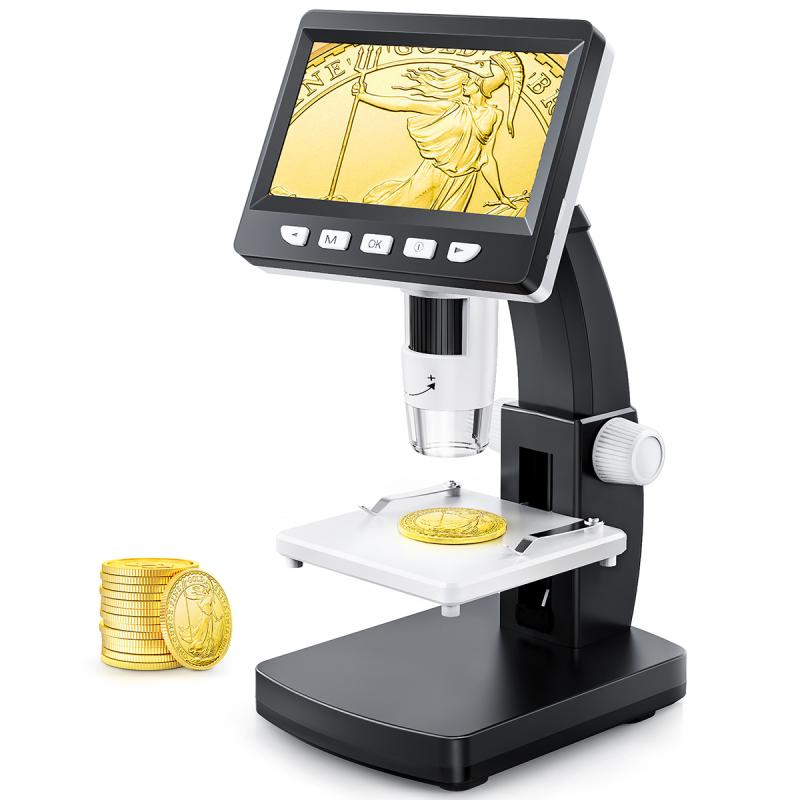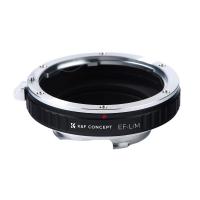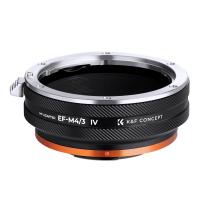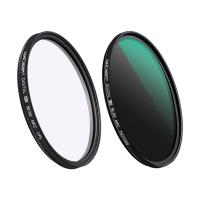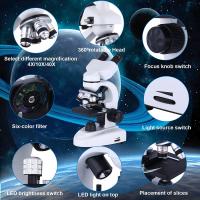What Can Be Viewed With An Electron Microscope ?
An electron microscope is a powerful tool that uses a beam of electrons to magnify objects up to millions of times their actual size. It can be used to view a wide range of materials, including biological specimens, metals, ceramics, and polymers. With an electron microscope, it is possible to see the fine details of cells, viruses, bacteria, and other microorganisms that are too small to be seen with a light microscope. It can also be used to examine the structure of materials at the atomic and molecular level, providing valuable insights into their properties and behavior. In addition, electron microscopes are used in a variety of fields, including materials science, nanotechnology, and semiconductor manufacturing, to study the structure and properties of materials and devices.
1、 Atomic structure
Atomic structure can be viewed with an electron microscope. An electron microscope uses a beam of electrons to create an image of a sample. This type of microscope has a much higher resolution than a traditional light microscope, allowing scientists to see structures at the atomic level.
With an electron microscope, scientists can view the arrangement of atoms in a crystal lattice, the structure of molecules, and the surface of materials. They can also observe the behavior of electrons and other subatomic particles.
In recent years, advances in electron microscopy have allowed scientists to view atomic structures in even greater detail. For example, cryo-electron microscopy (cryo-EM) has become a powerful tool for studying the structure of proteins and other biomolecules. This technique involves freezing samples in liquid nitrogen and imaging them at very low temperatures, which helps to preserve their structure.
Another recent development is the use of aberration-corrected electron microscopy, which corrects for distortions in the electron beam and allows for even higher resolution imaging. This technique has been used to study the structure of materials such as graphene and carbon nanotubes.
Overall, electron microscopy has revolutionized our understanding of atomic structure and continues to be an important tool for scientific research.

2、 Nanoparticles
Nanoparticles are one of the most commonly viewed objects with an electron microscope. An electron microscope uses a beam of electrons to create an image of the sample being viewed. This beam of electrons has a much shorter wavelength than visible light, allowing for much higher resolution images to be produced. This makes it possible to view nanoparticles, which are typically too small to be seen with a traditional light microscope.
Nanoparticles are particles that are typically between 1 and 100 nanometers in size. They can be made from a variety of materials, including metals, ceramics, and polymers. They have a wide range of applications, including in electronics, medicine, and environmental remediation.
One of the latest developments in the field of electron microscopy is the use of cryo-electron microscopy (cryo-EM) to view nanoparticles. Cryo-EM involves freezing the sample being viewed in order to preserve its structure. This allows for the imaging of biological samples, such as proteins and viruses, at near-atomic resolution. This technique has revolutionized the field of structural biology, allowing researchers to better understand the structure and function of complex biological systems.
In addition to nanoparticles, electron microscopes can also be used to view a wide range of other materials, including cells, tissues, and materials used in industry. The high resolution and magnification provided by electron microscopy make it an invaluable tool for researchers in a variety of fields.

3、 Viruses
Viruses can be viewed with an electron microscope. In fact, electron microscopy is one of the most powerful tools for studying viruses. With an electron microscope, scientists can observe the structure and morphology of viruses, as well as their interactions with host cells.
The latest point of view on virus imaging with electron microscopy is the use of cryo-electron microscopy (cryo-EM). Cryo-EM is a technique that allows scientists to image viruses and other biological molecules in their native state, without the need for staining or fixation. This technique involves rapidly freezing the sample in liquid nitrogen, which preserves the structure of the virus or molecule.
Cryo-EM has revolutionized the field of virus imaging, allowing scientists to obtain high-resolution images of viruses and their interactions with host cells. This has led to a better understanding of the structure and function of viruses, as well as the development of new antiviral drugs and vaccines.
In addition to viruses, electron microscopy can also be used to view other biological samples, such as cells, tissues, and organelles. It is a valuable tool for studying the structure and function of biological systems, and has contributed greatly to our understanding of the natural world.

4、 Bacteria
Bacteria can be viewed with an electron microscope. In fact, electron microscopy has been instrumental in advancing our understanding of the structure and function of bacteria. With the use of electron microscopy, scientists have been able to visualize the intricate details of bacterial cells, including their cell walls, membranes, and internal structures.
Recent advances in electron microscopy have allowed for even greater resolution and detail in the imaging of bacteria. For example, cryo-electron microscopy (cryo-EM) has become a powerful tool for studying the structure of bacterial proteins and complexes. This technique involves freezing samples in liquid nitrogen and imaging them at very low temperatures, which helps to preserve their native structure.
In addition to studying the structure of bacteria, electron microscopy has also been used to investigate their behavior and interactions with other organisms. For example, researchers have used electron microscopy to study the interactions between bacteria and host cells during infection, as well as the interactions between bacteria in complex microbial communities.
Overall, electron microscopy has been a critical tool in advancing our understanding of bacteria and their role in the natural world. As technology continues to improve, we can expect even more detailed and insightful images of these fascinating microorganisms.
